Are The Baffling La Marche Cave Paintings Authentic Or Cunning Forgeries?
Ellen Lloyd - AncientPages.com - Every now and then, we come across strange and controversial archaeological discoveries that are naturally of great interest to all truth-seekers. In most cases, investigating the unusual findings can be difficult because sometimes ancient objects are “lost” or misplaced.
This problem is not present in cave paintings because engravings cannot be easily “removed” out of sight. This brings us to today’s subject, which concerns very unusual cave paintings in France.
Few European places have caused controversy like the strange La Marche cave. Scientists continue to argue over the unorthodox cave paintings that challenge our knowledge of ancient history. Are the extraordinary cave paintings authentic or cunning forgeries?

Faces carved on the floor of a cave at La Marche. Credit: Fuentes Oscar
Frankly, in this case, we must say that these baffling cave paintings seem almost too good to be true. Did someone commit a horrible archaeological crime by deliberately creating these paintings? If so, then for what reason?
La Marche is a cave located near the village of Lussac-les-Châteaux, Vienne, in western France. It is one of the most important archaeological sites for stone carvings from the Magdalenian period, 17,000 - 12,000 years ago.
Between 1937 and 1940, Léon Péricard and Stéphane Lwoff discovered the cave complex, which contained approximately 1,500 limestone stones with carvings depicting bears, lions, antelopes, and horses, as well as 155 curiously realistic human figures.
The humans depicted on the cave walls are puzzling. They are very different from other Paleolithic drawings and resemble caricatures of real people: old men, children, men whose faces are shaved, and women (often obese), sometimes dressed in coats and with hats and boots. Several of them have ornaments on their bodies that can be interpreted as paintings or perhaps tattoos.
The interpretations of these remarkable carvings are controversial and still disputed. Many scientists consider them forgeries because the ‘real’ people in La Marche Cave resemble modern art.
The carvings are also difficult to interpret because sometimes one image overlaps with another or several of them.
The depictions date back to about 15,000 - 13,000 B.C., and we know that at the time, Europe was largely under the weight of glaciers. It was before great civilizations appeared.
If the paintings are authentic, one must question the existence of primitive man as we know it. However, it’s hard to imagine the drawings are real because nothing similar has been found elsewhere in Europe.
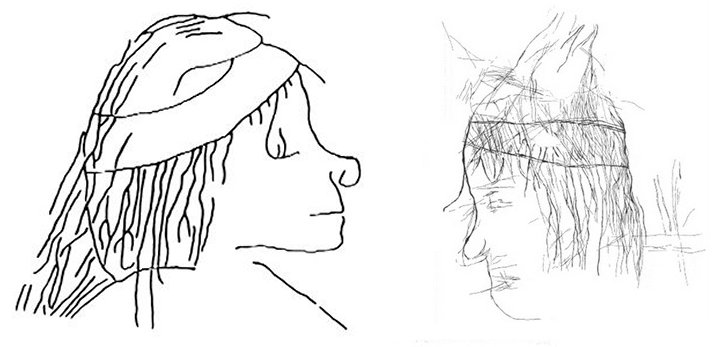
The La Marche cave paintings are intriguing, but are they authentic? Credit: Fuentes Oscar
The Lascaux cave, located on a hill at Dordogne, near Montignac, in southern France, is famous for its outstanding Magdalenian paintings, but the images we come across there certainly do not resemble anything we find in the La Marche cave.
Ancient Pages explained previously, the “brilliant prehistoric paintings of Lascaux, with their anatomically perfect details of all depicted animals, are rendered with great art skills like shadowing, highlighting, stenciling, and the use of perspective, a technique that was not rediscovered until the Golden Age in Greece.

Lascaux cave paintings depicting animals. Credit: Public Domain
However, looking at the millennia-old Paleolithic artwork of Lascaux, where only simple stick figures represent a man, we cannot tell if the artists were a Neanderthal man or Cro-Magnon man or perhaps someone else.”
Compared to the Lascaux cave paintings, the carved etchings at La Marche appear crude and far too modern.
It’s also worth noting that people depicted on the walls at La Marche are dressed in rather modern clothes. This may perhaps not be so surprising considering ancient figurines of men and women wearing modern-day clothes have been previously encountered in Europe.
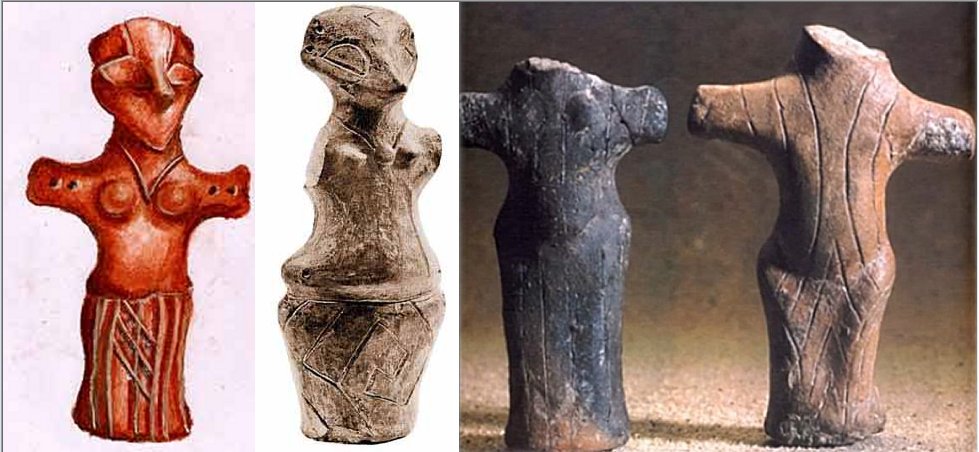
The Vinca figurines.
“The Vinca legacy includes among others, curious masks and the most informative costumed figurines depicting women in extremely modern clothes like narrow skirts, and sleeveless upper-body panels, complimented with hip belts, aprons, jewelry, shoes, caps, hairstyles, bracelets, necklaces, and medallions.”
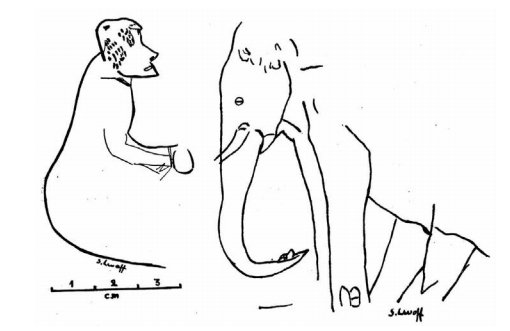
Is this an authentic carving of a woman who lived during the Magdalenian period? Credit: Fuentes Oscar
However, the Vinca culture in southeastern Europe, present-day Serbia, and smaller parts of Bulgaria, Macedonia, and Romania flourished from about 6000 BC to 3000 B.C.. Though Vinca's living style reminds us of our own, it cannot be compared to the engravings found inside the La Marche cave.
Some scientists think the La Marche cave paintings are authentic, but there are also many experts who doubt the engravings were produced during the Magdalenian period.
Regarding the La Marche cave paintings, the verdict is still out there.
Updated on July 31, 2024
Written by Ellen Lloyd – AncientPages.com
Copyright © AncientPages.com All rights reserved. This material may not be published, broadcast, rewritten or redistributed in whole or part without the express written permission of AncientPages.com
Expand for referencesFuentes, Oscar & Lucas, Claire & Robert, Eric. (2017). An approach to Palaeolithic networks: The question of symbolic territories and their interpretation through Magdalenian art. Quaternary International. 503. 10.1016/j.quaint.2017.12.017.
More From Ancient Pages
-
 Can Peptide Droplets Explain The Emergence Of The First Living Organisms On Earth?
Archaeology | Oct 20, 2021
Can Peptide Droplets Explain The Emergence Of The First Living Organisms On Earth?
Archaeology | Oct 20, 2021 -
 On This Day In History: Albertus Magnus – Medieval Person Of Great Historical Importance Died – On Nov 15, 1280
News | Nov 15, 2016
On This Day In History: Albertus Magnus – Medieval Person Of Great Historical Importance Died – On Nov 15, 1280
News | Nov 15, 2016 -
 Ancient Human Traces Found In The Inhospitable Namib Desert
Human Beginnings | Oct 21, 2024
Ancient Human Traces Found In The Inhospitable Namib Desert
Human Beginnings | Oct 21, 2024 -
 Discoveries In The Hanged Man Cave, Kostkowice, Poland
News | Sep 16, 2015
Discoveries In The Hanged Man Cave, Kostkowice, Poland
News | Sep 16, 2015 -
 Many Samurai Had Swords With Secret Crucifixes And Hidden Christian Symbols To Avoid Persecution
Ancient History Facts | Jan 10, 2017
Many Samurai Had Swords With Secret Crucifixes And Hidden Christian Symbols To Avoid Persecution
Ancient History Facts | Jan 10, 2017 -
 Man Finds A Viking Sword In His Garden – A Viking Grave Could Also Be Nearby – Scientists Say
Archaeology | Sep 2, 2022
Man Finds A Viking Sword In His Garden – A Viking Grave Could Also Be Nearby – Scientists Say
Archaeology | Sep 2, 2022 -
 Huge Mass Grave With Remains Of Pirate Black Sam’s Crew Discovered In North America
Archaeology | Apr 3, 2018
Huge Mass Grave With Remains Of Pirate Black Sam’s Crew Discovered In North America
Archaeology | Apr 3, 2018 -
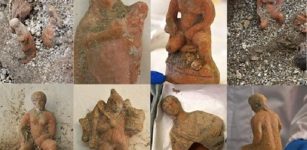 13 Ancient Terracotta Figurines Associated With Cybele And Attis Unearthed In Pompeii
Archaeology | Dec 28, 2023
13 Ancient Terracotta Figurines Associated With Cybele And Attis Unearthed In Pompeii
Archaeology | Dec 28, 2023 -
 Fra Mauro Medieval Map: Accurate And Detailed Work Attesting To Advanced Geographic Knowledge Of Contemporary Cartographers
Artifacts | Feb 8, 2019
Fra Mauro Medieval Map: Accurate And Detailed Work Attesting To Advanced Geographic Knowledge Of Contemporary Cartographers
Artifacts | Feb 8, 2019 -
 Cave Of The Stone Sepulcher – ‘Actun Tunichil Muknal’ And Its Dark History
Featured Stories | Mar 22, 2019
Cave Of The Stone Sepulcher – ‘Actun Tunichil Muknal’ And Its Dark History
Featured Stories | Mar 22, 2019 -
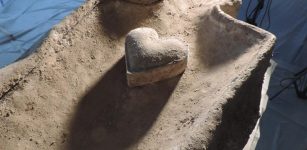 Remarkable discovery: Ancient coffins reveal centuries-old secrets of French nobility
News | Sep 1, 2015
Remarkable discovery: Ancient coffins reveal centuries-old secrets of French nobility
News | Sep 1, 2015 -
 Advanced Ancient Civilization’s Encounter With Primitive People Led To Something Extraordinary – Thought-Provoking Theory Suggests
Ancient Mysteries | Dec 19, 2018
Advanced Ancient Civilization’s Encounter With Primitive People Led To Something Extraordinary – Thought-Provoking Theory Suggests
Ancient Mysteries | Dec 19, 2018 -
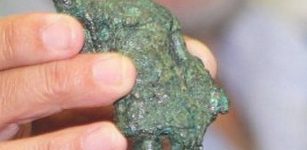 Unique Figurine of Roman God Mars Unearthed In Bulgaria
Artifacts | Aug 22, 2015
Unique Figurine of Roman God Mars Unearthed In Bulgaria
Artifacts | Aug 22, 2015 -
 Catequil – Inca God Of Thunder And Lightning Who Predicted The Future And Was Cultural Hero Of Inca People
Featured Stories | Nov 11, 2023
Catequil – Inca God Of Thunder And Lightning Who Predicted The Future And Was Cultural Hero Of Inca People
Featured Stories | Nov 11, 2023 -
 Are Climate-Related Calamities Erasing Illinois’ Cultural History? An Archaeologist Explains
Earth Changes | Dec 27, 2024
Are Climate-Related Calamities Erasing Illinois’ Cultural History? An Archaeologist Explains
Earth Changes | Dec 27, 2024 -
 Home Of The Gods – The Return Of The Gods – Part 3
Ancient Mysteries | Jun 14, 2018
Home Of The Gods – The Return Of The Gods – Part 3
Ancient Mysteries | Jun 14, 2018 -
 Troll Cross – Protection Symbol Believed To Ward Off Evil Powers
Ancient Symbols | May 12, 2018
Troll Cross – Protection Symbol Believed To Ward Off Evil Powers
Ancient Symbols | May 12, 2018 -
 Archaeologists Begin Excavations Of A Sunken Zhiyuan Warship That Sank In 1894
Archaeology | Oct 7, 2015
Archaeologists Begin Excavations Of A Sunken Zhiyuan Warship That Sank In 1894
Archaeology | Oct 7, 2015 -
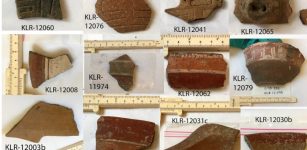 Surprising Diversity Of Ethnic Groups In The US Virgin Islands Before Columbus – New Study
Archaeology | May 18, 2023
Surprising Diversity Of Ethnic Groups In The US Virgin Islands Before Columbus – New Study
Archaeology | May 18, 2023 -
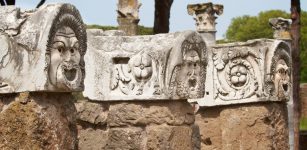 Ostia Antica – Unique Ancient Harbor City In The Suburbs Of Rome
Civilizations | Nov 29, 2018
Ostia Antica – Unique Ancient Harbor City In The Suburbs Of Rome
Civilizations | Nov 29, 2018
